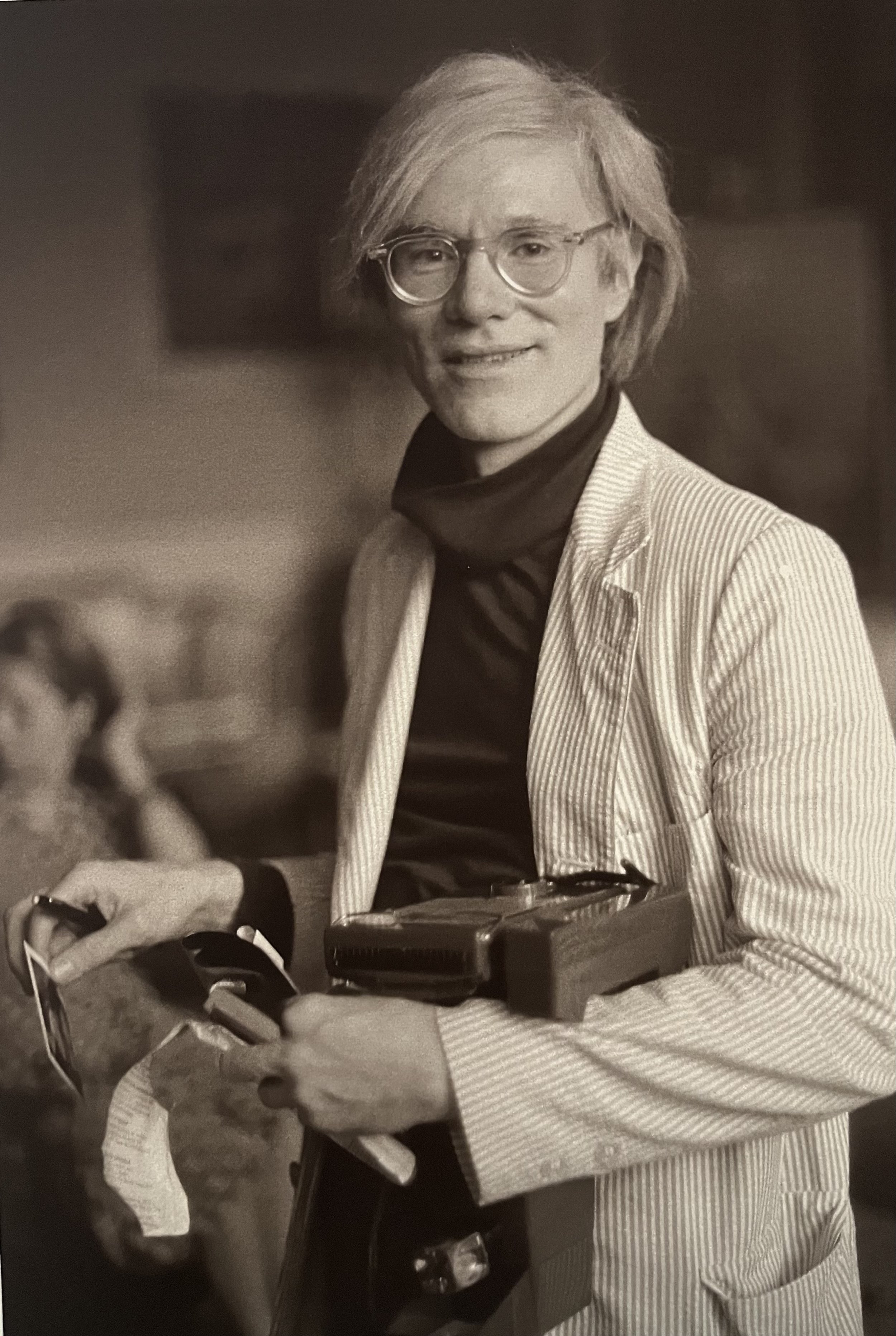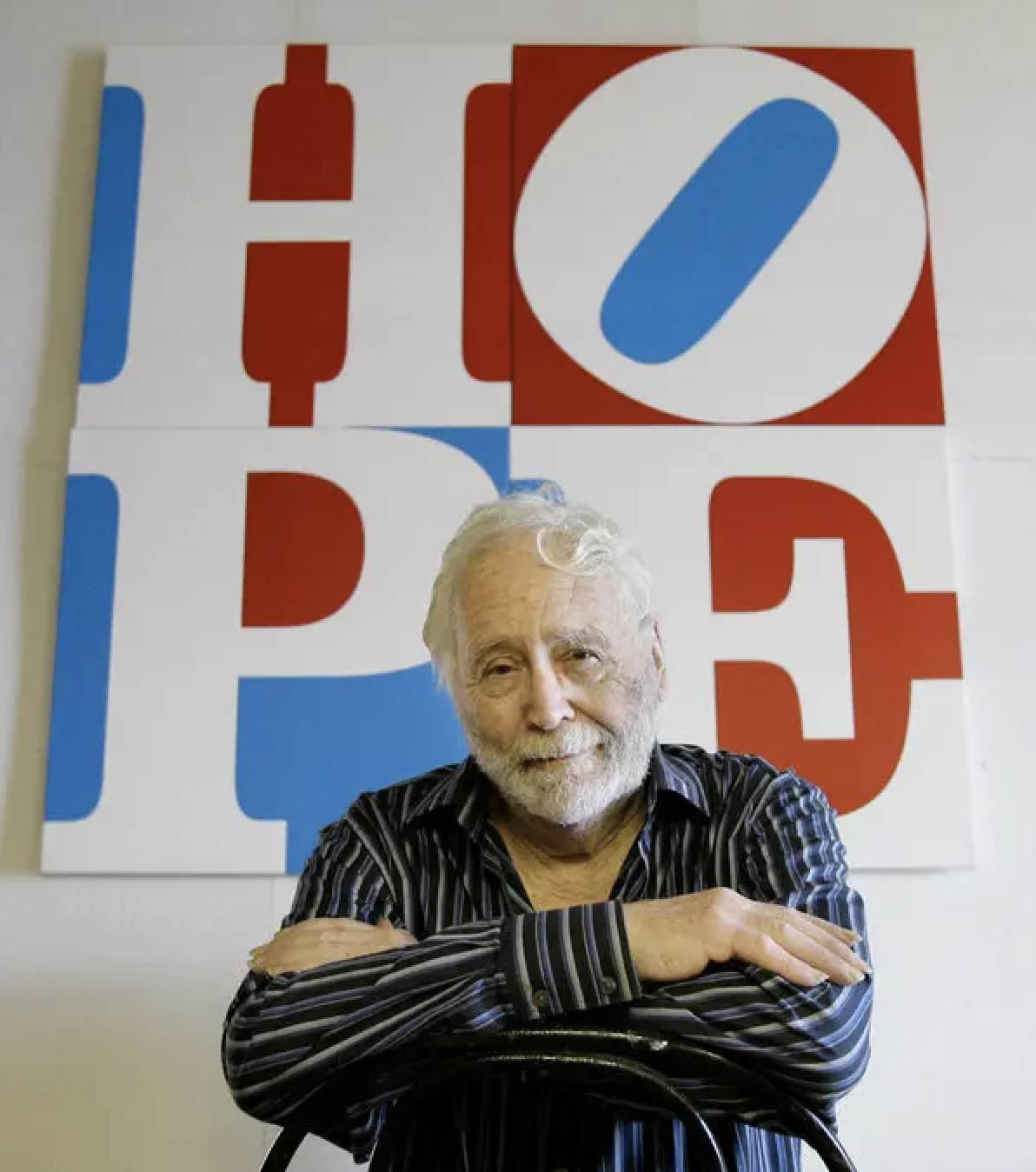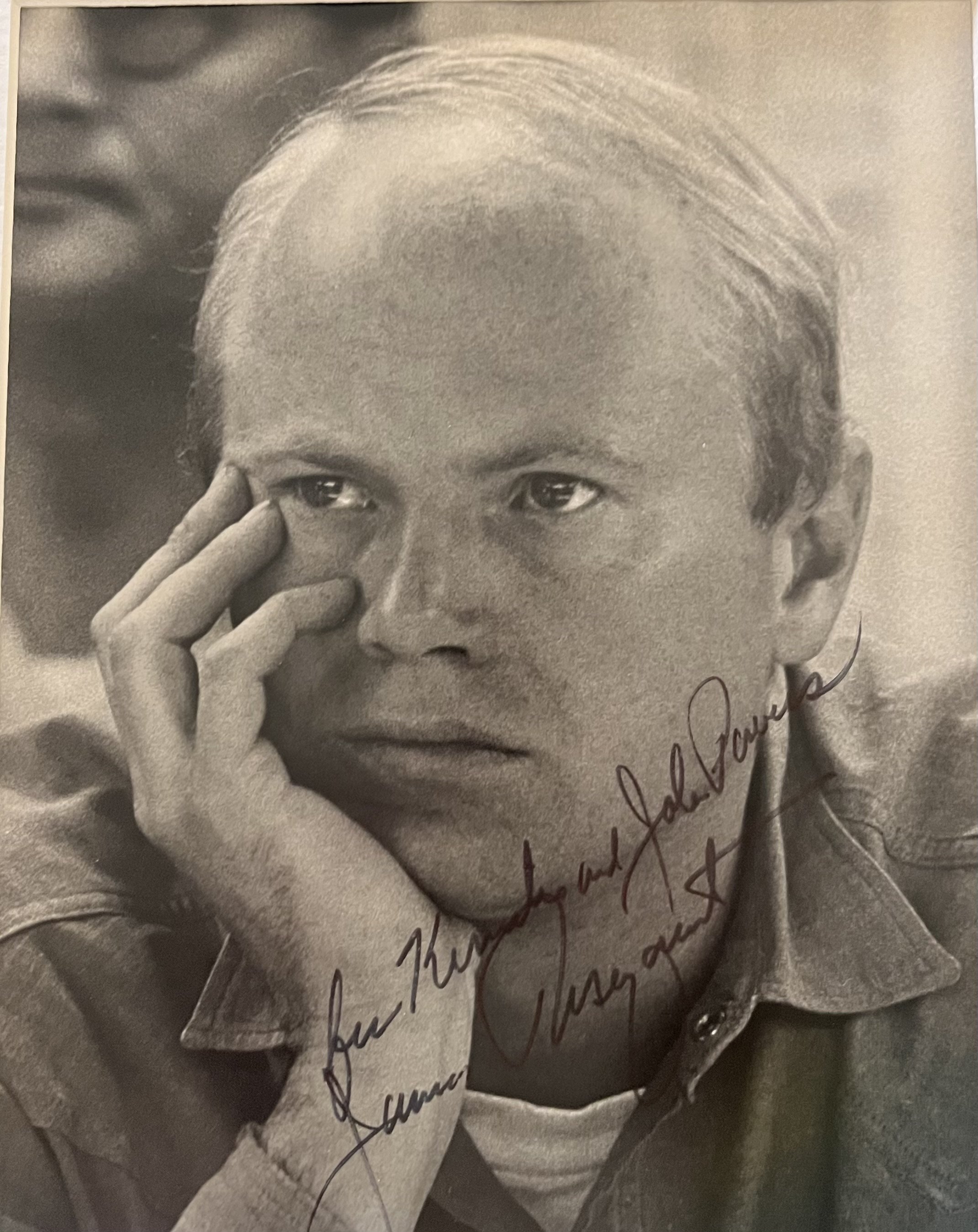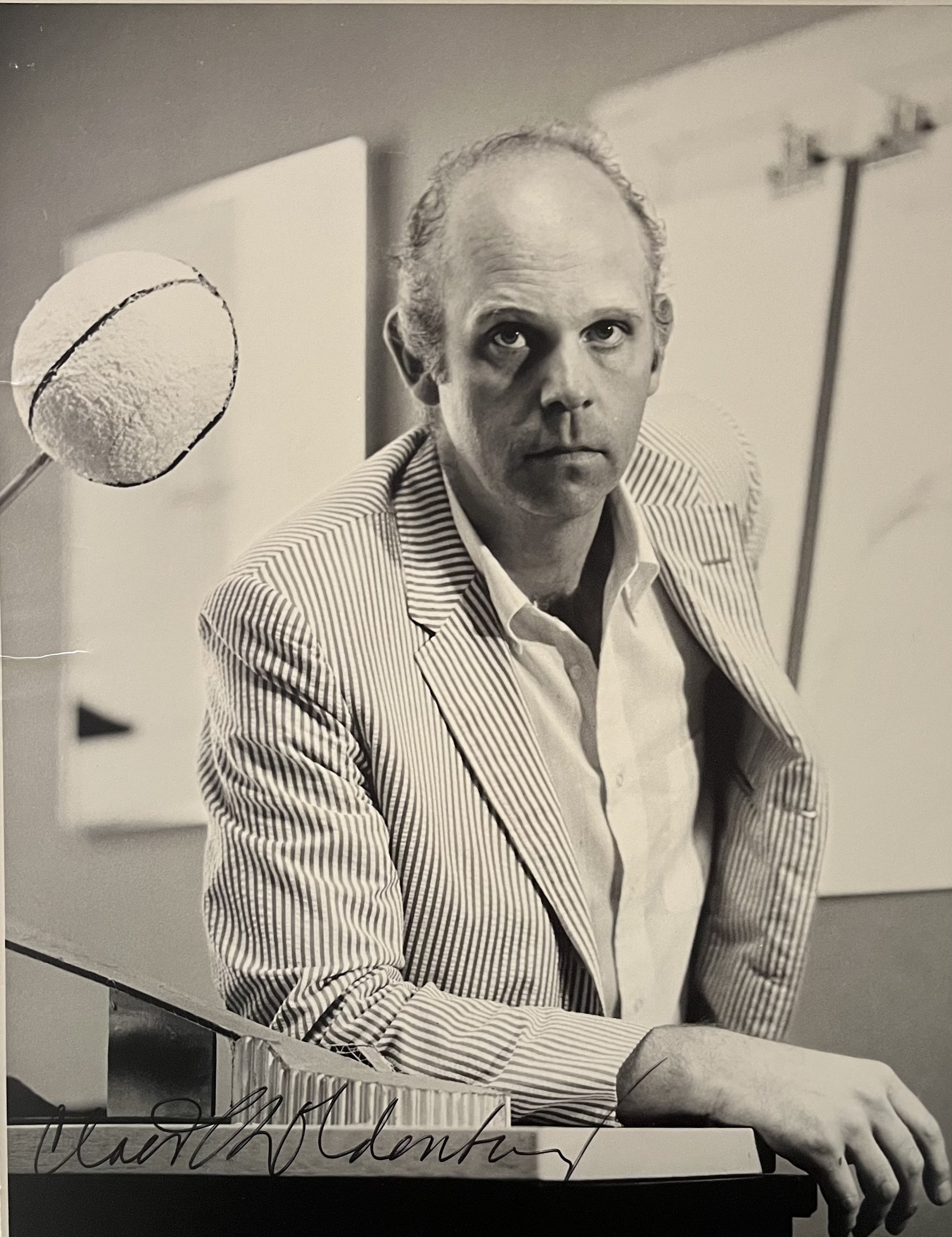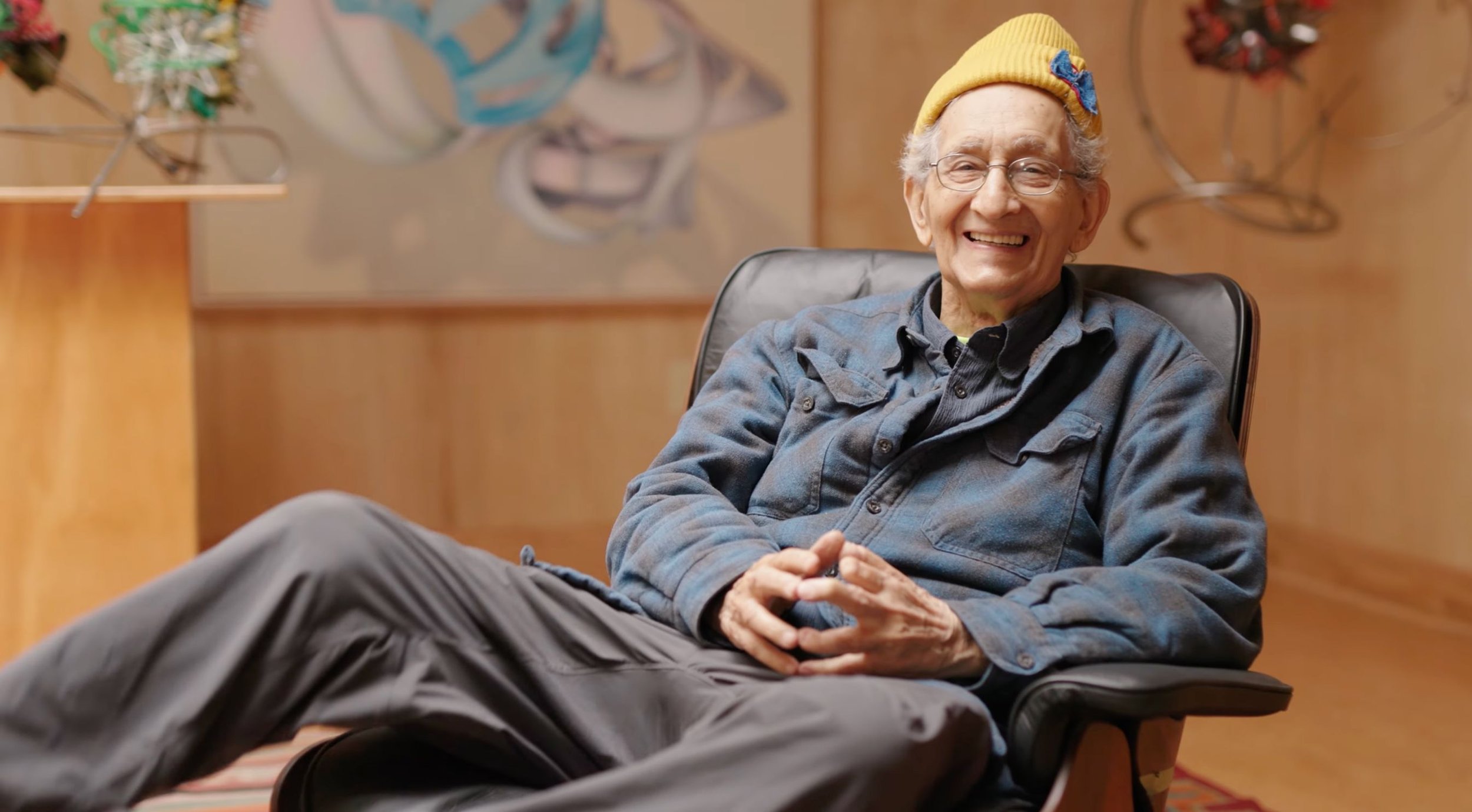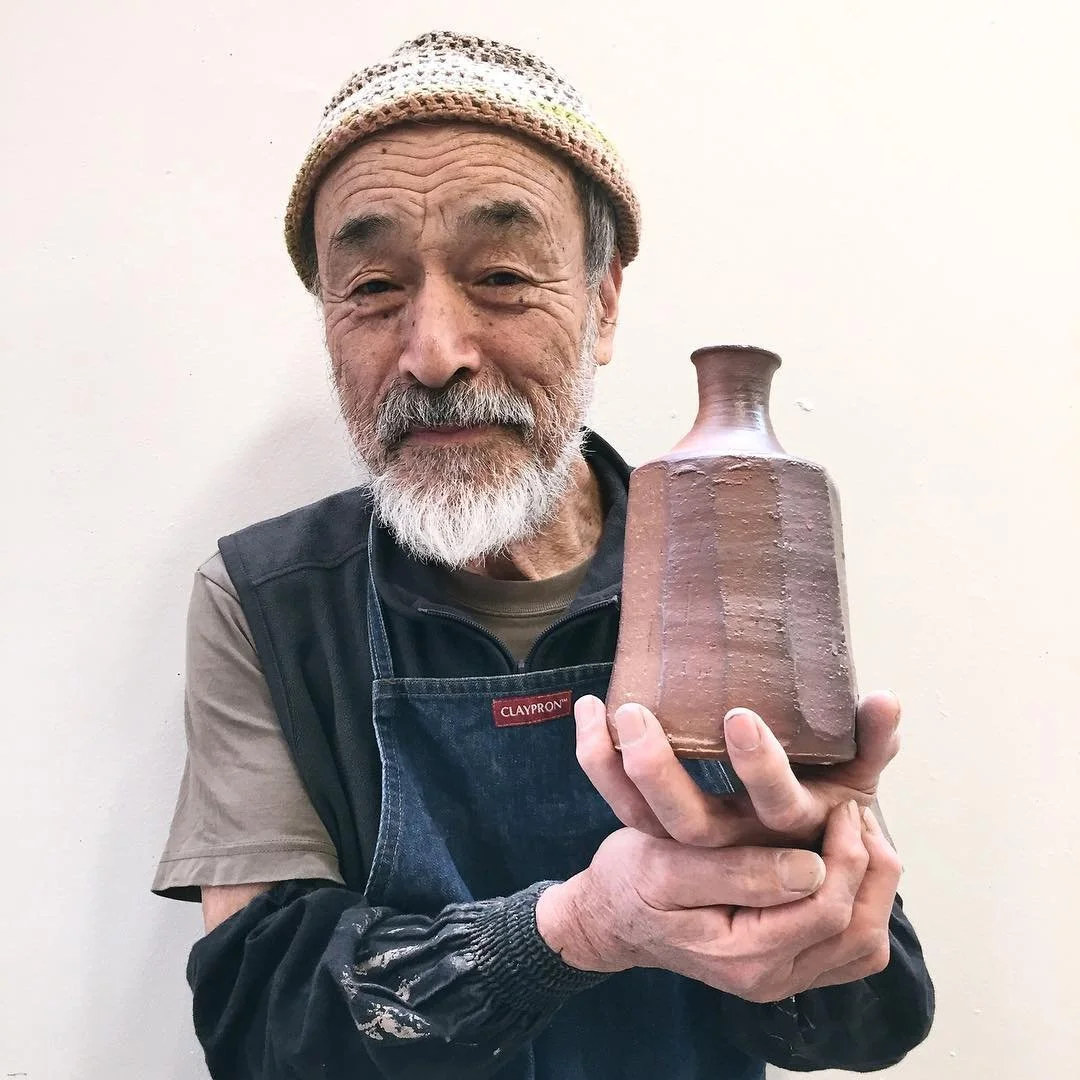On Exhibit
Featured Artists In the Collection
-
Robert Rauschenberg (1925–2008) was a revolutionary American artist whose boundary-pushing approach reshaped the landscape of postwar art. Working fluidly across painting, printmaking, photography, sculpture, and performance, he is best known for combining everyday objects with traditional materials, a practice that expanded the definition of what art could be. Rauschenberg’s "Combines" fused painting and sculpture, challenging the visual language of Abstract Expressionism and opening the door to Pop, Conceptual, and Performance Art.
Often mentioned alongside Jasper Johns, Rauschenberg helped spark a pivotal shift in American art during the 1950s and 60s. His work embraced spontaneity, material experimentation, and the poetry of the ordinary.
John Powers first encountered Rauschenberg in the late 1950s at Leo Castelli Gallery and became one of his earliest collectors and advocates. Powers recalled:
"He is a genius at proving that anything can be the subject of art... and that any material can be used as art."
Their friendship endured through decades of collaboration and celebration. Rauschenberg visited Aspen, where his work was exhibited and championed by the Powers. Powers once recounted,
"Warhol and Rauschenberg both visited Aspen while they were here. In fact, Rauschenberg broke his arm while skiing and went to the opening in a sling."
In 1971, Rauschenberg created Cardbirds, a sculptural series using corrugated cardboard. Arrows marked their surfaces, evoking both avian movement and the mundane beauty of shipping boxes. These works, like much of his practice, honored the overlooked and transformed the everyday.
Cardbirds is on view in In the Living Room with John and Kimiko at the Powers Art Center.
-
Roy Lichtenstein (1923–1997) is one of the most recognizable figures of the Pop Art movement, best known for his signature comic book style and use of Benday Dots. His bold compositions drew on advertising, romance comics, and commercial imagery, elevating everyday visuals into fine art. Like many of his Pop contemporaries, Lichtenstein sought to challenge distinctions between “high” and “low” culture, while also exploring themes of consumerism, war, and American iconography.
Born in New York City, Lichtenstein was immersed in arts and culture from an early age. He served in World War II before returning home to launch his career. By the 1960s, he had joined Leo Castelli’s influential gallery and was exhibiting widely. It was through Castelli that Lichtenstein met John and Kimiko Powers, beginning a lasting friendship built on mutual respect and shared passions.
Lichtenstein and John Powers bonded over jazz and the saxophone. Powers, a dedicated player himself, encouraged Lichtenstein to revisit the instrument. That spirit of play and rhythm is reflected in Lichtenstein’s design for the first Aspen Jazz Festival poster, a commission that blended his artistic style with the improvisational energy of jazz.
In 1967, Lichtenstein participated in the inaugural Aspen Center for Contemporary Art residency, spearheaded by Powers. He spent the summer creating in the program’s studio, helping to establish Aspen as a serious site for contemporary art.
The Powers collection includes Still Life (1968), a striking screenprint on aluminum that fuses Cubism, Art Deco, and comic book aesthetics, a hallmark of Lichtenstein’s genre-defining legacy.
-
Allan D’Arcangelo (1930–1998) was an American artist whose work sits at the intersection of Pop Art and Minimalism, marked by graphic precision and a keen sense of political commentary. Best known for his stark depictions of American highways and road signs, D’Arcangelo developed a visual language that reflected the cultural tensions and visual clutter of postwar America.
Born in Buffalo, New York, D’Arcangelo studied art at the University of Buffalo before traveling to Mexico City, where he was influenced by the scale and social impact of Mexican muralists. That influence—bold, flat color fields and a commitment to political expression—can be traced throughout his career.
Unlike many of his Pop Art peers, who leaned into consumerism and celebrity culture, D’Arcangelo’s work often interrogated power structures, conformity, and national identity. His compositions used familiar American imagery such as roadways, signs, and silhouettes, to reflect a more ambiguous, sometimes alienating view of modern life. These works have been widely referenced in discussions of Postwar art, Pop Art, and Minimalist abstraction.
D’Arcangelo’s art is held in major public collections, including the Museum of Modern Art, the Whitney Museum, and the Smithsonian. His work played a subtle yet crucial role in shaping the visual critique of American society during the 1960s and beyond.
In 1967, he was invited by John Powers to participate in the inaugural Aspen Center for Contemporary Art residency, creating alongside artists like Claes Oldenburg and Roy Lichtenstein. His contributions include Side View Mirror and Landscape III (both 1965), now on view in In the Living Room with John and Kimiko at the Powers Art Center.
-
Andy Warhol (1928–1987) was a leading figure of the 1960s Pop Art movement, and his legacy continues to shape contemporary culture. Known for his bold colors, sharp graphic style, and fascination with celebrity and mass media, Warhol transformed the familiar into the iconic. Turning soup cans, movie stars, and commercial imagery into fine art.
In 1970, Warhol shifted from his usual subjects to create a series titled Flowers, inspired by a photograph from Modern Photography magazine. He cropped and manipulated an image of hibiscus flowers taken by editor Patricia Caulfield, reducing it to a square composition. The resulting works explored repetition and beauty, but also sparked controversy: Caulfield sued for unauthorized use, leading Warhol to pivot—he began using only photographs he took himself.
Warhol’s relationship with John and Kimiko Powers was rooted in mutual respect and deep friendship. In a 2001 interview with Bob Monk of Gagosian Gallery, Kimiko reflected:
“He was the most generous artist. He had the sharpest mind of anyone I have ever known... He was very comfortable with John and me... He didn’t have to put up a façade.”
Their bond extended beyond collecting, they connected with the artist himself, and that relationship forms a central thread in the Powers Art Center exhibition In the Living Room. Warhol’s art gains added meaning when viewed through the lens of this intimate connection, reminding us that behind the iconic screenprints was a deeply thoughtful, generous artist and friend.
-
Robert Indiana (1928–2018) was an American painter, sculptor, and graphic artist whose bold use of language, color, and form made him one of the most enduring figures of Pop Art. Born Robert Clark in Indiana, he later adopted his home state’s name as his own, transforming it into an identity that reflected both personal roots and national symbolism.
Raised in the rural Midwest, Indiana drew inspiration from the visual language of Americana: roadside signs, stencils, and bold commercial graphics. After moving to New York City, he worked in sign painting and graphic design, experiences that heavily shaped his signature aesthetic. Indiana became a leading voice in Hard-edge painting, a response to the emotive abstraction of earlier decades, defined by clean lines, geometric forms, and saturated color.
Indiana is best known for his "LOVE" design, created in 1964 as a MoMA holiday card. Its stacked lettering and tilted “O” became an iconic image of the era, embraced during the 1960s peace and antiwar movements. While widely accessible, the work also carried deeper emotional and spiritual resonance, reflecting Indiana’s ongoing interest in themes like hope, desire, identity, and loss.
Throughout his career, Indiana continued to explore numbers, symbols, and words in both sculpture and print, always bridging the personal and the political. His style remains instantly recognizable: concise, colorful, and layered with meaning.
In the Powers Collection are Love (1967, poster) and Kimikoisokko (1968), a personal birthday drawing for Kimiko Powers, reflecting his close connection to the Powers family.
-
James Rosenquist (1933–2017) was a defining voice in the Pop Art movement, known for his large-scale paintings and collages that fused everyday imagery with surrealist juxtapositions. Drawing from his early career as a billboard painter, Rosenquist developed a distinctive visual language that transformed commercial motifs into art, often at monumental scale.
Inspired by the slick, seductive style of 1950s and ’60s advertising, Rosenquist subverted its messaging by reassembling and distorting familiar icons like lipstick, spaghetti, and cars, into dreamlike compositions that challenged the viewer’s perception. His work teetered between representation and abstraction, crafting a uniquely American surrealism grounded in consumer culture.
Born in North Dakota and raised across the Midwest, Rosenquist showed artistic promise from a young age. After studying art formally, he moved to New York City, where he balanced commercial work painting advertisements with ongoing experimentation in his own studio. By the 1960s, he emerged as part of a generation of artists, alongside Warhol, Lichtenstein, and Rauschenberg, who redefined the boundaries of contemporary art.
Rosenquist joined Leo Castelli’s gallery, solidifying his place in the Pop Art canon. His rise paralleled many young innovators of the New York art scene, and his influence expanded globally.
His relationship with John and Kimiko Powers is reflected in the works they collected, including For Love (1965) and Collage (1985, created for the Denver Art Museum). Several of his posters and pieces are featured in the current exhibition, In the Living Room with John and Kimiko, at the Powers Art Center.
-
Jasper Johns (b. 1930) emerged as a pivotal figure in the American art scene during the 1950s, playing a key role in the shift away from Abstract Expressionism toward new movements such as Neo-Dada, Minimalism, and Pop Art. Known for his use of familiar imagery, particularly flags, targets, and maps, Johns brought a concrete visual language to modern art that blurred the boundaries between everyday objects and high art. His work challenged traditional notions of symbolism and representation, and many of his pieces remain some of the most sought-after at auction, often selling for record-breaking prices.
Born in Augusta, Georgia, and raised in South Carolina, Johns aspired to be an artist from a young age. He briefly studied at the University of South Carolina before moving to New York City in the early 1950s. There, he encountered influential figures such as composer John Cage, choreographer Merce Cunningham, and painter Robert Rauschenberg. A visit to Pennsylvania to see Marcel Duchamp’s The Large Glass deepened his interest in conceptual approaches to art, especially the idea of the “readymade,” in which found objects are presented as finished works.
Throughout his career, Johns produced a wide and innovative range of work including paintings, drawings, prints, and sculptures. His achievements in printmaking place him among the greatest in history, alongside artists like Dürer, Rembrandt, Goya, Munch, and Picasso. Over more than five decades, Johns developed a distinctive aesthetic that shaped the future of American art and helped define its transition into new creative territories.
-
Claes Oldenburg (1929–2022) was a visionary sculptor known for transforming the ordinary into the extraordinary. A defining figure in the Pop Art movement, Oldenburg rose to prominence in the late 1950s with work that challenged expectations of form, function, and meaning. He often reimagined everyday objects—burgers, tools, lipstick tubes—at colossal scale, injecting humor and absurdity into public and gallery spaces alike. For Oldenburg, art was a form of radical play and subversion, a way to question what art is and who it’s for.
His sculptures blurred the boundary between high and low, serious and silly. As he once put it, he sought “an art that clobbers you.” Art that engages directly, playfully, physically.
Oldenburg shared a long and meaningful friendship with John and Kimiko Powers, marked by personal visits, artistic collaboration, and heartfelt exchanges. Upon John’s passing in 1999, Oldenburg wrote:
“John Powers blowing his saxophone in his beloved Rockies, Mount Sopris never out of sight... a lover of art who understood that art is to be lived with... and must be shared.”
During his 1967 residency at the Aspen Center for Contemporary Art, Oldenburg crafted a now-legendary soft-sculpture baseball bat for a mock game between musicians and artists. The bat flopped mid-swing, to everyone’s delight, and was later gifted to the Powers as a whimsical emblem of that summer’s joy.
The bat, along with other notable Oldenburg works, is featured in In the Living Room with John and Kimiko at the Powers Art Center.
-
Christo (1935-2020) and Jeanne-Claude (1935-2009) were a visionary artist duo best known for their monumental, fabric-based installations that transformed public spaces into temporary works of art. Born on the same day, June 13, 1935, Christo in Bulgaria and Jeanne-Claude in France, the two met in Paris in 1958, eventually marrying and forming a lifelong creative partnership.
Their collaborative work involved wrapping buildings, bridges, landscapes, and coastlines in fabric, creating immersive, large-scale interventions in both urban and natural environments. These projects often took years, or even decades in some cases, to complete due to the extensive planning, engineering, and permitting required. Yet each finished work became a powerful statement about presence, impermanence, and public space.
Among their most iconic projects: Wrapped Reichstag (Berlin, 1995), which swathed Germany’s Parliament building in silver fabric following the Cold War; The Gates (Central Park, NYC, 2005), a flowing network of saffron-colored curtains; and Surrounded Islands (Miami, 1983), where 11 islands in Biscayne Bay were bordered by vibrant pink fabric.
Christo and Jeanne-Claude’s work invited viewers to consider the fragility of the environment, the relationship between nature and human intervention, and the beauty of the ephemeral. All their installations were public and free to experience, and notably self-funded through the sale of preparatory drawings and models—reinforcing their belief in independence and accessibility in art.
Jeanne-Claude passed away in 2009, followed by Christo in 2020. Their legacy continues through the powerful ideas they championed.
-
Frank Stella (1936–2024) was a celebrated American artist whose work spanned painting, sculpture, printmaking, and set design, known for pushing abstraction into bold new territory. His art is defined by the use of geometric forms, luminous color, and architectural composition. In his own words:
“You could tell a story with the shapes. It wouldn't be a literal story, but the shapes and the interaction of the shapes and colors would give you a narrative sense.”
Stella was one of the first artists to experiment with neon day-glow and fluorescent paints, earning him a reputation as a master colorist. His optical effects of placing vibrating hues in close proximity produced work that was simultaneously aggressive and mesmerizing:
“The color is meant to be aggressive and kind of contentious... The eye likes dissonance. Imbalance keeps you looking.”
Among Stella’s most iconic works is the Protractor Series (1967–71), based on semicircular forms and executed in vibrant color. He later created the Newfoundland Series, a group of six prints named after towns along Newfoundland’s western coast, further exploring the tension between form and illusion.
Stella was introduced to Aspen through John Powers, who recognized his talent early on. In a 1968 Aspen Times article, Stella was described as having “a position and an influence on other artists that is remarkable for his age.”
The Learning Lab at the Powers Art Center invites visitors to engage with Stella’s ideas through interactive art-making stations using protractors, graph paper, and bright shapes, inspired by his dynamic approach to form and color.
-
Takashi Nakazato (b. 1937) is a celebrated Japanese ceramicist and a member of the Nakazato family, a dynasty of potters whose lineage spans centuries and is recognized as a Living National Treasure of Japan. He was born in Karatsu, a historic pottery region in southern Japan, and trained at the family’s Taroemon Kiln, one of the most respected and storied kilns in the country. While his eldest brother inherited the main kiln, Takashi, the youngest of five brothers, established his own studio and quickly distinguished himself through modern interpretations of traditional forms.
His relationship with John and Kimiko Powers began serendipitously. While visiting the Nakazato kilns, the couple browsed the gift shop and found themselves drawn exclusively to Takashi’s work—unaware at first that all their selected pieces had been made by the same artist. This sparked a lasting friendship. The Powers later invited Takashi to the United States, introducing him to Anderson Ranch Arts Center in Snowmass, Colorado, where he would go on to share his craft and culture with a new audience.
Takashi Nakazato’s work reflects both heritage and innovation, honoring centuries of technique while pushing the boundaries of form and function. His pieces in the Powers Collection serve as a testament to cross-cultural connection, and to the power of art to bring people together across time, place, and tradition.
-
The Critic Sees, Jasper Johns, 1967 (Ryobi Foundation Collection) © Jasper Johns




